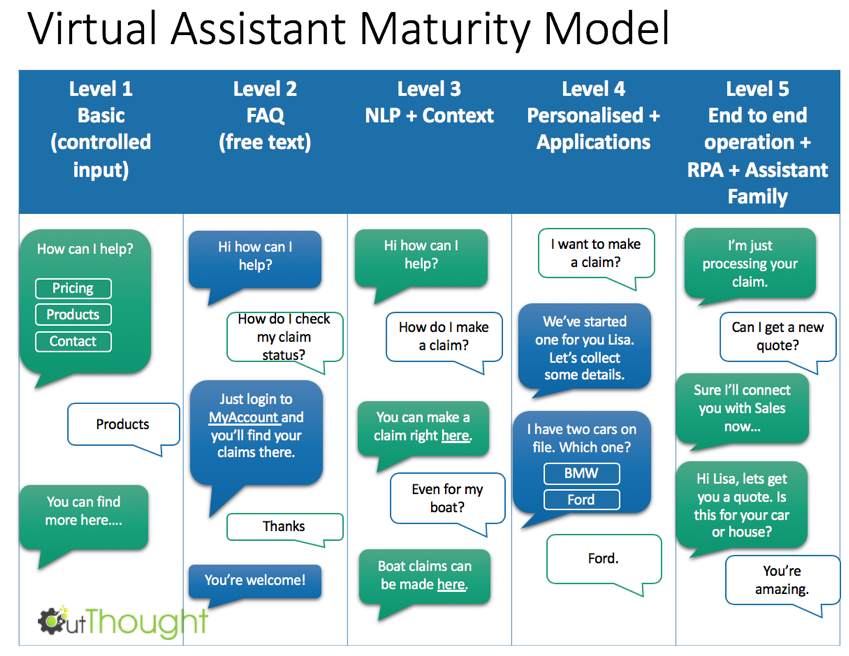The following post is an interview provided to ProProfs in December, 2019.
The promise of a delightful customer support experience comes with the responsibility of actually delivering it. Just getting new software onboard does not mean that you already provide a great experience to your customers. There are various things that need to be taken into account besides the use of a support tool that makes or breaks the experience for a customer.
In case you’d like some insight on it, we’ve got you covered. In our interview with Ben Motteram, we’ve explored areas like customer-centric strategies, emotional intelligence and the upcoming role of chatbots.
Based in Melbourne, Ben is a customer experience specialist with over 20 years’ experience developing and implementing customer acquisition and retention strategies among some of the largest organisations in Australia. Through his consulting company, CXpert, Ben now works with leaders to create companies employees and customers love.
The success of a customer-centric strategy is determined by the extent that a business is prepared to support it. It’s one thing to say: “we are 100% focussed on our customers”; it’s entirely another thing to make the drastic internal changes that are required to deliver on that promise. Being customer centric requires the entire organisation to be aligned behind the customer. That means transforming the organisation so that:
If an organisation has an existing strategy that conflicts with its CX strategy, that reduces the chance of success. And in the Age of the Customer, businesses that don’t execute their CX strategy successfully, run the real risk of long-term failure.
According to Daniel Goleman, an American psychologist who helped to popularize emotional intelligence, there are five key elements to it:
It goes without saying that in a customer support role, all five elements of emotional intelligence are critical not only for connecting with customers and calmly resolving their issues, but also for operating successfully within a team.
Chatbots are already adding significant value when used in the context of Frequently Asked Questions, triage assistance, lead generation and e-commerce. The potential strengths of bots are:
In contrast, live chat is great for customers who prefer dealing with humans and when more complex queries need to be addressed. To answer the question differently, I don’t think there is a contest between humans and chatbots; they’re complementary. Both have their own strengths and when employed successfully, they can work synergistically to enhance the customer experience.
When it comes to customer support the strategy doesn’t change, regardless of whether you’re an incumbent or a new entrant. Understand your customers: their wants, needs, preferences, motivations, and behavior and deliver to those.
For newcomers to gain a competitive edge, they should consider how incumbents are currently supporting customers and determine if it could be done better in more innovative ways. Could the industry be disrupted by the use of technology (as was done by Uber and Airbnb)? Could customer needs be pre-empted as Amazon successfully did with their A9 organic product ranking algorithm? Are there any customer needs that are currently being unfulfilled?
Agility is the biggest advantage that newcomers in any industry should leverage on. They won’t have any legacy systems or policies in place that are hard to change. They can rapidly respond to market conditions and should use that to differentiate themselves.
A Gartner report predicted that 25% of companies will use chatbots for their customer service operations by 2020. That’s a lot of chatbots! When you consider that 80% percent of consumers prefer to message customer support than call them (as per another report from IBM), I think that number is realistic. An Australian company, OutThought, which designs and delivers intelligent chatbots, has designed a Maturity Model specific to Virtual Assistants (see Figure 1). I think this accurately sums up where we are now and where we’re going in the next few years.
 Figure 1: OutThought Virtual Assistant Maturity Model
Figure 1: OutThought Virtual Assistant Maturity Model
Currently, Assistants in most organisations are at Level 2 and some may have integration points to other live agent systems for handover or basic integration to applications (Level 4). Coming next in Level 3 is the ability to apply context, which will enable Virtual Assistants to naturally flow through a conversation even when the user’s input twists and turns in unexpected ways.
Beyond that, in Level 4, we will start to interact with Assistants that can effortlessly include information about us from disparate enterprise systems in the organisation. The example above would return the user to vehicle types and ask which vehicle they would like to make a claim for. It would also collect the claim information and store this in the CRM or another enterprise system against the customer’s record, starting the actual claims process within the Virtual Assistant.
Finally, in the stage I’m looking forward to the most, Level 5, where Assistants will start to combine simple business processes using robotic process automation such as combining linked customer data from separate sources, executing a create claim request or other, and be able to take, and send information to the Virtual Assistant to complete a user’s request or process, end-to-end for multiple processes.
It is also likely by this time that organisations won’t have just one Virtual Assistant in customer service. They will have several Virtual Assistants with different roles and capabilities that are all aware of each other and where to route users based on which assistant will serve them best.
The future looks very bright for chatbots. For those working in customer service, it certainly is an exciting time to be alive!
This post is a collaboration with Nabeel Abdul Latheef and follows on from an interview I gave a few
....READ MORE
This post first appeared on Help Desk Migration's website. Customer expectations are shifting, and businesses that ignore them risk being
....READ MORE
Dr. Luke Soon once again collaborated with me on this post. Developed in 2003, NPS (Net Promoter Score) is a
....READ MORE